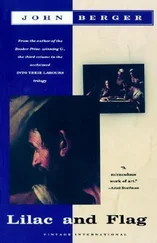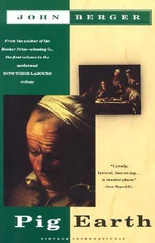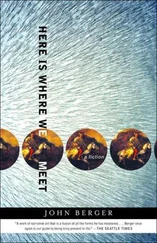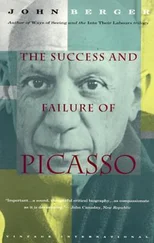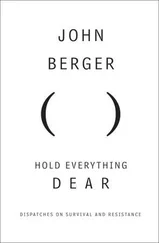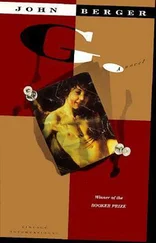Like a stain stands out on the object that is stained. ‘I am here and this photo happened over there, far away, small,’ says the ‘reader’ who distances himself.
And I imagine, Mr Berger, that the final result of the relationship between the writer and the reader, through the text (‘or from the image’, insists my other self again), escapes both. Something is imposed on them, gives significance to the text, provokes one to come closer or go further away. And this ‘something’ is related to the new division of the world, with the démocratisation of death and misery, with the dictatorship of power and money, with the regionalisation of pain and despair, with the internationalisation of arrogance and the market. But it also has to do with the decision of Alvaro (and of thousands of indigenous along with him) to take up arms, to fight, to resist, to seize a voice that they were denied before, not to devalue the cost of the blood that this implies. And it also has to do with the ear and eye that are opened by Alvaro’s message, whether they see and hear it, whether they understand it, whether they draw near to him, his death, his blood that flooded the streets of a city that has always ignored him, always … until this past January the first. It also has to do with the eagle and heron, the European campesino who is resisting being absorbed and the Latin American indigenous who is rebelling against genocide. It has to do with the panic of the powerful, as the trembling, that is growing in its guts, no matter how strong and powerful it appears, when, without knowing, it prepares to fall …
And it has to do with, I reiterate and salute it in this way, the letters that come from you to us, and those that, with these lines, bring you these words: the eagle received the message, he understood the approach of the hesitant flight of the heron. And there below, the serpent trembles and fears the morning …
Vale , Mr Berger. Health and follow closely the heron up above until it appears as a small and passing flash of light, a flower that lifts itself up …
From the mountains of southern Mexico
Subcomandante Insurgente Marcos
Mexico, May 1995
III. How to Live with Stones
Marcos, I want to say something about a pocket of resistance. One particular one. My observations may seem remote, but, as you say, ‘A world can contain many worlds, can contain all worlds.’
The least dogmatic of our century’s thinkers about revolution was Antonio Gramsci, no? His lack of dogmatism came from a kind of patience. This patience had absolutely nothing to do with indolence or complacency. (The fact that his major work was written in the prison in which the Italian fascists kept him for eight years, until he was dying at the age of forty-six, testifies to its urgency.)
His special patience came from a sense of a practice which will never end. He saw close-up, and sometimes directed the political struggles of his time, but he never forgot the background of an unfolding drama whose span covers incalculable ages. It was perhaps this which prevented Gramsci becoming, like many other revolutionaries, a millennialist. He believed in hope rather than promises and hope is a long affair. We can hear it in his words:
If we think about it, we see that in asking the question: What is Man? we want to ask: What can man become? Which means: Can he master his own destiny, can he make himself, can he give form to his own life? Let us say then that man is a process, and precisely, the process of his own acts.
Gramsci went to school, from the age of six until twelve, in the small town of Ghilarza in central Sardinia. He was born in Ales, a village nearby. When he was four he fell to the floor as he was being carried, and this accident led to a spinal malformation which permanently undermined his health. He did not leave Sardinia until he was twenty. I believe the island gave him or inspired in him his special sense of time.
In the hinterland around Ghilarza, as in many parts of the island, the thing you feel most strongly is the presence of the stones. First and foremost it is a place of stones, and — in the sky above — of grey hooded crows. Every tanca — pasture — and every cork-oak plantation has at least one, often several piles of stones and each pile is the size of a large freight truck. These stones have been gathered and stacked together recently so that the soil, dry and poor as it is, can nevertheless be worked. The stones are large, the smallest would weigh half a ton. There are granites (red and black), schist, limestone, sandstone and several darkish volcanic rocks like basalt. In certain tancas the gathered boulders are long rather than round, so they have been piled together like poles and the pile has a triangular shape like that of an immense stone wigwam.
Endless and ageless dry-stone walls separate the tancas , border the gravel roads, enclose pens for the sheep, or, having fallen apart after centuries of use, suggest ruined labyrinths. There are also little pyramid piles of smaller stones no larger than fists. Towards the west rise very ancient limestone mountains.
Everywhere a stone is touching a stone. And here, over this pitiless ground, one approaches something delicate: there is a way of placing one stone on another which irrefutably announces a human act, as distinct from a natural hazard.
And this may make one remember that to mark a place with a cairn constituted a kind of naming and was probably among the first signs used by man.
Knowledge is power [wrote Gramsci], but the question is complicated by something else: namely that it is not enough to know a set of relations existing at a given moment as if they were a given system, one also needs to know them genetically — that’s to say the story of their formation, because every individual is not only a synthesis of existing relations, but also the history of those relations, which means the resume of all the past.
On account of its strategic position in the western Mediterranean and on account of its mineral deposits — lead, zinc, tin, silver — Sardinia has been invaded and its coastline occupied during four millennia. The first invaders were the Phoenicians, followed by the Carthaginians, the Greeks, the Romans, the Arabs, the Pisans, the Spanish, the House of Savoy and finally modern mainland Italy.
As a result Sardinians mistrust and dislike the sea. ‘Whoever comes across the sea,’ they say, ‘is a thief.’ They are not a nation of sailors or fishermen, but of shepherds. They have always sought shelter in the stony inaccessible interior of their land to become what the invaders called (and call) ‘brigands’. The island is not large (250 km. × 100 km.) yet the iridescent mountains, the southern light, the lizard-dryness, the ravines, the corrugated stony terrain, lend it, when surveyed from a vantage point, the aspect of a continent! And on this continent today, with their 3.5 million sheep and their goats, live 35,000 shepherds: 100,000 if one includes the families who work with them.
It is a megalithic country — not in the sense of being prehistoric — like every poor land in the world it has its own history ignored or dismissed as ‘savage’ by the metropols — but in the sense that its soul is rock and its mother stone. Sebastiano Satta (1867–1914), the national poet, wrote:
When the rising sun, Sardinia, warms your granite
You must give birth to new sons.
This has gone on, with many changes but a certain continuity, for six millennia. The shepherd’s pipe of classical mythology is still being played. Scattered over the island there remain 7,000 nuraghi- dry-stone towers, dating from the late neolithic period before the Phoenician invasion. Many are more or less ruins; others are intact and may be 12m. in height, 8m. in diameter, with walls 3m. thick.
Читать дальше

